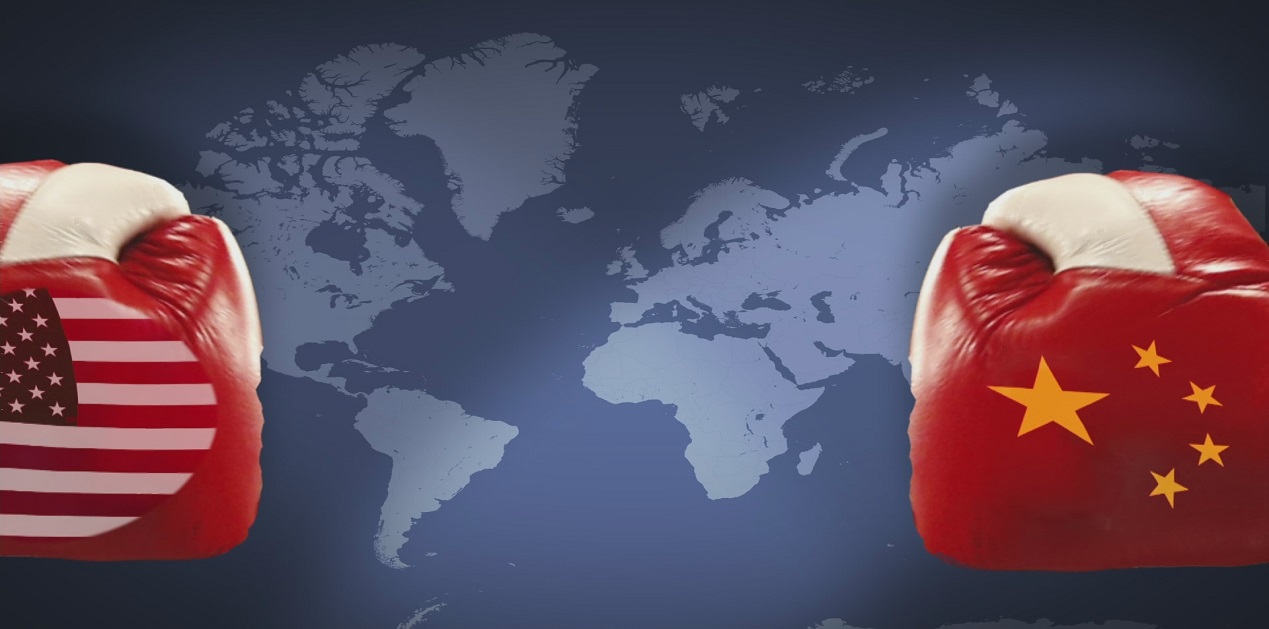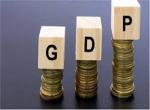Rising US trade deficit with China has become a serious issue in the current stage of US-China relations. The trade deficit has increased significantly in last five years and has become a central theme in Donald Trump’s China policy.
In 2017, the top US imports from China included electric apparatus, industrial machines, computers, computers accessories, semi-conductors, tele-communications, other parts and accessories of vehicles, apparel, textile, non-wool or cotton, footwear, furniture, household goods, household apparatus, cellphones, toys, games and sporting goods and television and video equipment’s. The top US exports to China included soyabean, civilian aircraft, engines equipment and parts and passenger car, new and used.1
US Trade in Goods with China

All figures in millions of US dollars
Source: https://www.census.gov/foreign-trade/balance/c5700.html
In an endeavour to put the trade relations on track, on 17-18 May 2018, the US-China held talks to resolve the differences between the two sides. The Chinese delegation was led by State vice Premier Liu He, while the US side was represented by Steven T. Mnuchin. This was the third meeting between the two sides. On 3 May 2018, Steven Mnuchin led a delegation of Wilbur Ross, Robert Lighthizer to Beijing.2 During the meeting, both sides decided to delay implementing the tariffs on Chinese goods, revise the list of targeted products and agreed to continue the talks.3 On 1 March 2018, Liu He, visited the US where he met US Treasury Secretary Steven Mnuchin, Gary Cohn and Robert Lighthizer to deal with the trade issue. The two sides had a candid exchange on bilateral economic and trade relations and agreed to create necessary conditions for in-depth cooperation going forward. 4
The two sides came out with a joint statement following the latest round of talks on economic and trade relations. 5 The joint statement stated that there was a consensus on taking effective measures to substantially reduce the US trade deficit in goods with China, and “to meet the growing consumption, needs of the Chinese people and the need for high-quality economic development, China will significantly increase the purchase of the US goods and services. This will help support growth and employment in the US.” 6 In the joint statement, both sides agreed on meaningful increase in US agriculture and energy exports to China, and expand trade in manufactured goods and services. They also discussed the issue of intellectual property protection, agreed to encourage two-way investment, and also to continue to engage at high levels on the above mentioned issues. 7
Reactions to the Joint Statement
The joint statement has come as an acknowledgement of the fact that balanced economic relations are crucial for stability in the bilateral relations. Commenting on the joint statement, Steven Mnuchin said that, we are putting the “trade war on hold” and that the recently concluded trade consultation have “made very meaningful progress”. Liu He said that “the biggest achievement coming from the latest trade talks is the consensus that there will be no trade war and both the sides will stop placing tariff on one another.” 8He further said that this was a positive, pragmatic, constructive and productive step. 9 The Spokesperson of the Chinese Ministry of Foreign Affairs, Lu Kang said, “the most remarkable consensus and outcome of this negotiation is that the two sides have recognised that the economic and trade issue need to be properly resolved through negotiation, and we should avoid the imposition of tariffs on goods imported from each other.” 10
Widening Differences
Parallel to the trade talks, Donald Trump imposed a “denial of export privileges” against the leading Chinese tele-communication company ZTE for seven years. 11 The ZTE was fined for violating US sanctions against North Korea and Iran. Soon after the ban, the ZTE share value fell hugely causing economic loses and putting many Chinese jobs at risk.12 Ahead of the third trade consultations, Donald Trump had tweeted about the ZTE that “he planned to help the Chinese company get back into the business.13 Later, Steven Mnuchin expounded on Trump position on the ZTE stating it was “completely independent” of the trade talks.14 Additionally, in the midst of the trade talks, there was a report that China was ready to reduce the trade deficit up to USD 200 billion. China denied having made any such concession for reducing the trade deficit.15
Growing tensions in relations with the US was a prominent issue discussed during the 19th Congress of the Communist Party of China and at the National People’s Congress (NPC) and the Chinese People’s Political Consultative Conference (CPPCC). Consequently, Xi Jinping appointed Liu He (vice-premier of China) and Wang Qishan to specially deal with economic and diplomatic issues related to the US.
It may be recalled, Donald Trump had highlighted the issue of Chinese currency during his election campaign. Soon after the Mar-a-Lago, Florida informal meeting, the two sides decided to set up a “100-day plan on trade” as well as high-level forum called the “US-China Comprehensive Economic Dialogue”. As a part of the plan, China received its first shipment of beef in 14 years, assured to buy US liquefied natural gas and open its financial service sector to US companies. However, the momentum of the trade talks was disrupted as China failed to provide adequate assistance in combating the nuclear threat from North Korea.
In order to deal with the trade issue, Donald Trump adopted a twofold step to deal with China; he signed an executive memorandum directing United States Trade Representative (USTR), Robert Lighthizer to examine China’s intellectual property rights (IPR).16 The issue of IPR has been a longstanding issue in US-China relations. Secondly, he blocked a Chinese attempt to buy Lattice Semi-Conductor Company on the ground of National Security. On 1 March 2018, Donald Trump announced that it would impose tariffs of 25 percent on steel and 10 percent on aluminium imports from all countries. As a counter-measure, China imposed tariffs on the 128 US products.
Putting aside the so-called “trade war” on hold does not assure that the US-China trade relations are on a smooth track for now. The details of the trade “truce” are not clear. On 21 May 2018, the spokesperson has said: “With growing interactions between these two large economies, we can hardly guarantee that there will not be any more friction, difference or divergence in the future.”17 Liu He has also cautioned that it will take longer to resolve the structural problem in the bilateral relations. The longstanding issue of IPR cannot be resolved immediately. The US Commerce Secretary Wilbur Ross will visit the US to talk on the issue.18
The US trade policies toward China has been to an extent determined by its growing concerns about China’s military activities in the South China Sea and its perceived role as a spoiler in US relations with North Korea. The US has already revoked its invitation to China to join the Rim of the Pacific (RIMPAC) exercise 2018, and continues to build pressure on China. Just few days after the announcement of trade truce, Donald Trump said he may impose a 25 percent tariff on USD 50 billion of goods imported from China.
The outcome of the trade consultations is bound to have implications on the other countries as well. It remains to be seen how the two sides will deal with the issue in the coming days and the wider ramifications for the region as a whole.
Reference
- https://www.census.gov/foreign-trade/statistics/producVenduse/exports/cS700.html 3/.html.
- https://economictimes.indiatimes.com/news/international/business/us-china-high-level-talks-begin-to-avert-trade-war/articleshow/64017568.cms.
- http://www.scmp.com/news/china/diplomacy-defence/article/2145250/donald-trump-puts-american-businesses-and-workers-first.
- http://www.fmprc.gov.cn/mfa_eng/xwfw_665399/s2510_665401/t1539127.shtml
- https://china.usembassy-china.org.cn/joint-statement-of-the-united-states-and-china-regarding-trade-consultations/.
- https://china.usembassy-china.org.cn/joint-statement-of-the-united-states-and-china-regarding-trade-consultations/.
- https://china.usembassy-china.org.cn/joint-statement-of-the-united-states-and-china-regarding-trade-consultations/.
- http://en.people.cn/n3/2018/0521/c90000-9462138.html.
- http://xinhuanet.com/english/2018-05/20/c_137191856.htm.
- http://www.fmprc.gov.cn/mfa_eng/xwfw_665399/s2510_665401/2511_665403/t1561142.shtml.
- https://www.commerce.gov/news/press-releases/2018/04/secretary-ross-announces-activation-zte-denial-order-response-repeated
- https://www.nytimes.com/2018/05/19/us/politics/china-trade-deal.html.
- https://www.bloomberg.com/news/articles/2018-05-14/trump-tweet-brings-sense-of-relief-uncertainty-at-china-s-zte.
- http://www.scmp.com/news/china/diplomacy-defence/article/2146983/its-not-over-yet-key-sticking-points-remain-us-and.
- http://en.people.cn/n3/2018/0519/c90000-9461866.html.
- https://ustr.gov/about-us/policy-offices/press-office/press-releases/2018/march/president-trump-announces-strong.
- http://www.fmprc.gov.cn/mfa_eng/xwfw_665399/s2510_665401/2511_665403/t1561142.shtml.
- https://www.nytimes.com/aponline/2018/05/21/us/politics/ap-united-states-china-trade.html.
The paper does not necessarily represent the organisational stance ...
Image Source: https://www.channel4.com/news/impact-of-kremlin-announcement-on-us-china-trade-war









Post new comment